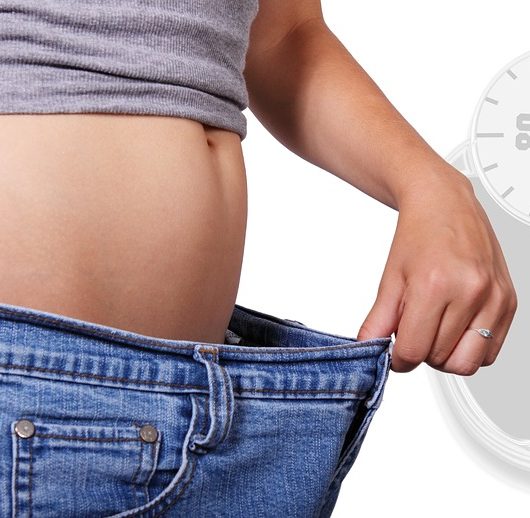ROLE OF PHYSICAL ACTIVITY IN REDUCING CHRONIC DISEASES

Human beings are susceptible to thousands of various illnesses. Millions of people every year are diagnosed with chronic diseases at almost their final stages. Unfortunately, thousands of people die every year, while others spent their remaining lives with the disease. Though it may sound like we are painting a bleak image, in reality, modern times have given maintenance solutions for us to successfully manage the prevailing symptoms and live a happy, healthy life. Though medicines and other lifelong drugs can help you live a comfortable everyday life, there is a hassle-free solution that can further reduce chronic illness symptoms—physical activity.
Before we go on to the role which physical activity plays in reducing chronic diseases, let’s start with a definition of both. A chronic illness is a condition that will most likely stay with you for the rest of your life, which means that you will have to live with the disease and the symptoms every day. Modern medicine has not found a solution through which one may prevent getting chronically ill. However, they can certainly manage the symptoms to make life easier.
Now that we have gone over what chronic illness is, let us talk about physical activity. It is any movement-based exercise that tests your endurance and strength. It can be something as simple as walking or as complicated as CrossFit. Either way, as long as you are moving and active, you’re fine. Now without further ado, here are the roles of physical activity in reducing chronic disease:
-
It is excellent for your heart
People suffering from heart disease and diabetes are at an increased risk of a heart attack. Compared to the average population, there is a more substantial chance of dying of their condition than some other illness. According to epidemiologists, light exercise can significantly improve your heart health and may control the disease from getting worse. Moreover, it can help regulate your blood sugar levels and balance out your blood pressure.
Epidemiologists strongly believe that exercise and general physical activity have a direct relation to your heart health. Now, you may be wondering, “what is epidemiology?” Well, epidemiology is the reason we know about chronic diseases in the first place. It’s the study of diseases as we know them. They study everything ranging from factors about the conditions, methods to treat them, and other relevant information that the general public needs to know.
Since epidemiologists are knowledgeable professionals, it would be wise to listen to them. It would be best if you act on what they say regarding exercise and physical activity. After all, they’re the experts.
-
Physical activity helps with your joints
One of the most common chronic illnesses in the adult population is arthritis. Arthritis is a chronic disease related to bones and joints. As you age, you are much more likely to develop arthritis if you have a family history of joint disorders. For those of you living in colder parts of the country, arthritis can be debilitating. It can lock your joints in a state of agony and significantly restrict your mobility.
Doctors recommend as much physical activity as naturally and comfortably possible to help with joint mobility. Meaning that you should be focusing on stretches, moderate weights, and movement-based exercises to help loosen stiff joints. Doing so will make a living with arthritis considerably more bearable than you might have initially imagined.
-
Improves your mood!
You may not think that this is an essential factor when dealing with a chronic illness. Give us a chance to change your mind. Chronic illness is known to get people’s moods down reasonably often. After all, you are suffering from a disease that is most likely lifelong and causes a fair amount of discomfort in your everyday life. Of course, it’s going to take a toll on your mood! Exercise can be one of the best stress relievers and mood boosters. The release of endorphins is known to increase your mood and make you feel better about yourself. Moreover, simply having an activity to look forward to in the day can improve your overall motivation and make you feel better in general.
We understand that mood might not seem like an apparent benefit that you would want to consider, but it is. Only once you are diagnosed with a chronic illness, you realize how depression can affect you. Therefore, it would be wise to see the mood benefits which exercise brings. It can bring a great deal of happiness and positivity into your life.
-
It can prevent certain illnesses
You may indeed have a predisposition to certain chronic medical conditions because of your genetics. Family heart disease, diabetes, and Alzheimer’s are some of the most common chronic illnesses to be passed on through genetics. However, you could prevent a fair number of diseases simply by staying physically active. If you live an active and healthy life, there is a strong chance that you might never contract these diseases.
For example, engaging in frequent cardio can prevent heart disease from setting in. Because you are pushing your body to extremes and testing your cardiovascular endurance, there’s a chance you might be able to avoid heart disease. Cardio workouts work your heart as much as they do your body. Therefore, you can expect a fair amount of heart health as a result of the exercise.
Living a healthy life is half the battle won. Prevention is always better than treatment, especially when it comes to chronic illnesses. If you start early, you are setting the groundwork for a healthy life. One which could potentially be free from chronic diseases that could plague you during adulthood.
Conclusion
Being diagnosed with a chronic illness can be one of the worst feelings in any person’s life. The level of emotional arousal which doctors subjectively report in patients when delivering bad news is staggering. Though you might think that life has thrown an unavoidable curveball your way, know that there’s always a solution.Undoubtedly, the benefits of exercise are too great for one to ignore. These recommendations come from seasoned epidemiologists and researchers who have found cause-and-effect relationships between activity and the alleviation of symptoms. This article could be the breakthrough you were looking for today. Start with some light physical activity, don’t wait any longer!









